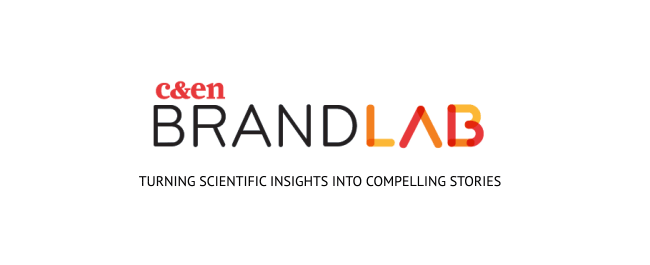When the bottom line is product or service sales, it’s easy for marketers to get caught up in touting features, price comparisons, and new and improved aspects related to their B2B offerings. This is the traditional route of product marketing. It focuses on marketing specific products to an audience segment with an overt message intended to inspire them to purchase. So what’s the risk of product marketing vs content marketing?
Customers these days are more wary, and bristle against overt marketing copy when they aren’t looking for it. Unless your customer’s aim is to find product or service information, your well-planned product marketing runs the risk of being overlooked.
Content marketing, however, is designed to provide solutions for customers’ pain points and challenges. Its goal is to educate and inform, ultimately tapping into what the user cares about by focusing on value propositions over product specifications. It can still include subtle messaging that points the customer towards a purchase, but its overt theme is helping your audience solve problems, or providing them with topical information.
For companies in technical fields, such as science and engineering, it’s easy to see the unique value of content marketing, given how much education and detail goes into a scientist’s purchases. There’s only so much a B2C marketer can write about let’s say, Halloween costumes to its buyer, but if you’re marketing new genotyping software or a sophisticated microscope, the more information and customer exploration, the better.
Comparing the Tactics
The differences between product marketing vs content marketing may seem pretty obvious, but let’s take a look at how those distinctions manifest in the tactics themselves.
Product marketing uses a lot of paid and direct advertising, along with content that is designed to close a sale (think sales sheets and product pages). Content marketing has an additional layer, relying a lot on ‘inbound marketing,’ which involves drawing the audience in to your brand with genuinely helpful content. The challenge here is making sure those resources are found. This can be achieved through tactics like keyword optimization, and strategies such as guest blogging, social media, and thought-leadership.
Timelines can also be quite different. Product marketing tends to be more urgent and, due to the high cost of paid marketing, it seeks to deliver immediate ROI in terms of sales. Tracking with coupon codes can be tied directly to specific advertising campaigns and are therefore key, to show where the money went. A similar strategy can be taken using tracking URLs for specific sales collateral supporting a product roll out. So, if you’re selling a new, cutting-edge flow cytometer, you can use a unique tracking URL for each of your paid marketing tactics and landing pages, allowing you to determine ROI on each individual piece of your campaign.
Content marketing can certainly be geared towards short-term goals, but it works best with longer timelines. For example, with search engine optimization, blog or site content gradually gains priority in search engine results pages (SERP). From there, additional content and tools (think emails, webinars, and infographics) are used to nurture contacts through a funnel. With this approach, it takes longer to see ROI, but you’re engaged with and nurturing a much larger – and growing –audience.
Content Marketing for B2B
In practice, while not that different for consumers, content marketing can be significantly more impactful for B2B efforts. How so?
Successful content marketing is customer-centric, not corporation-centric.
Imagine marketing a contact lens solution to a consumer. You can utilize fun and funny anecdotes about losing a contact lens, creating tips and tricks to preserve your contacts, or any number of related topics. Content marketing for B2B is more challenging, especially in the sciences, but the work it takes to get these campaigns off the ground requires a deeper understanding of your audience. This will be key to basically everything you do, content marketing or not. To sell an innovative biomarker assay to a busy researcher, for example, means understanding their daily workflows and customer pain points, and what their frustrations and limitations are with using their current biomarker detection methods.
For bigger ticket items, such as a multi-year analytical testing service or a mass spectrometer, customers need a lot of nurturing content before they’ll pull the trigger. They’ll likely also need to get approval from their superiors or the relevant procurement manager, so your content should keep those decision makers in mind as well. A sales sheet isn’t going to cut it.
When you’re ready to create inbound content for a B2B audience, you have to speak to those often complicated and detailed pain points, and on top of that, offer solutions that get in front of potential customers by, for example, using the keywords they are most likely to search for. If this sounds like a lot of effort, you’re not wrong. However, content marketing can increase sales on expensive equipment and contracts, so it should pay for itself many times over.
Shifting the Content Perspective
Instead of marketing from your position as a products or services provider, content marketing focuses on the customer. It’s about your customer, not you. The best content marketing may not even mention your product or service at all, but rather, the content will gently guide the reader toward you as part of the solution.
Here are some examples:
| Product Marketing | Content Marketing |
| The XYZ system will improve productivity by 60%. | Key productivity solutions from industry experts. |
| Our high-performance product uses the newest technology. | How do the newest technologies for XYZ stack up? |
| We provide high quality, validated antibodies. | The pros and cons of different approaches to authenticating and reproducing antibodies. |
| We’re offering new and better protocols. | Tips for streamlining your sample preparation and assay run time. |
| We are clinical trial partners at the forefront of cancer research. | Oncology research: Overcoming common obstacles in your research study design. |
In the above examples, you can see how marketing statements should be reimagined to appeal to customer pain points and the specific challenges and opportunities of your target audiences. Successful content marketing is customer-centric, not corporation-centric.
Keeping Distribution in Mind
Remember, adopting a content marketing approach isn’t just about the words on the page. It should also be reflected in your distribution strategy. Instead of passing this information out as sales collateral at an event (when people really just want a handful of your tradeshow candy), you could work with a publication to share it with their audience. Think about your own channels as well. Could it work as a long-form post on LinkedIn? Or, would a minimally-branded infographic work? Make the content easier for the customer to consume.
Reimagined Product Marketing
Achieving a customer-centric and engaging content marketing strategy can be difficult, especially if you are a non-scientist marketing to scientists. (Raise your hands, don’t be shy!) And while it sometimes ‘takes one to know one,’ don’t let that lack of a PhD discourage you. Talking to your potential customers can help provide critical marketing intelligence for everyone on your team, irrespective of their background. You will always gain a better understanding of your buyers by consulting with those experienced with your audiences.
So, what is the difference between product marketing vs content marketing? To put it all together, successful content marketing addresses the challenges that your customers face in their work that can be resolved by your company’s products or services. But you’re not going to get their attention by simply marketing product features. Instead, learn what keeps your customers up at night and use your marketing to speak to their biggest problems. Tap into what the user cares about and present your products and services in terms of their user benefits rather than product specifications.
Need a Hand With Your Content Marketing?
Organizations like C&EN BrandLab can also give you a powerful head start.
We employ scientists and researchers to facilitate effective brand storytelling, delivering a strong example for your team to emulate as you seek to turn complex science into a cohesive content marketing strategy. Click here to contact us.
Featured Photo by Pankaj Patel on Unsplash



















